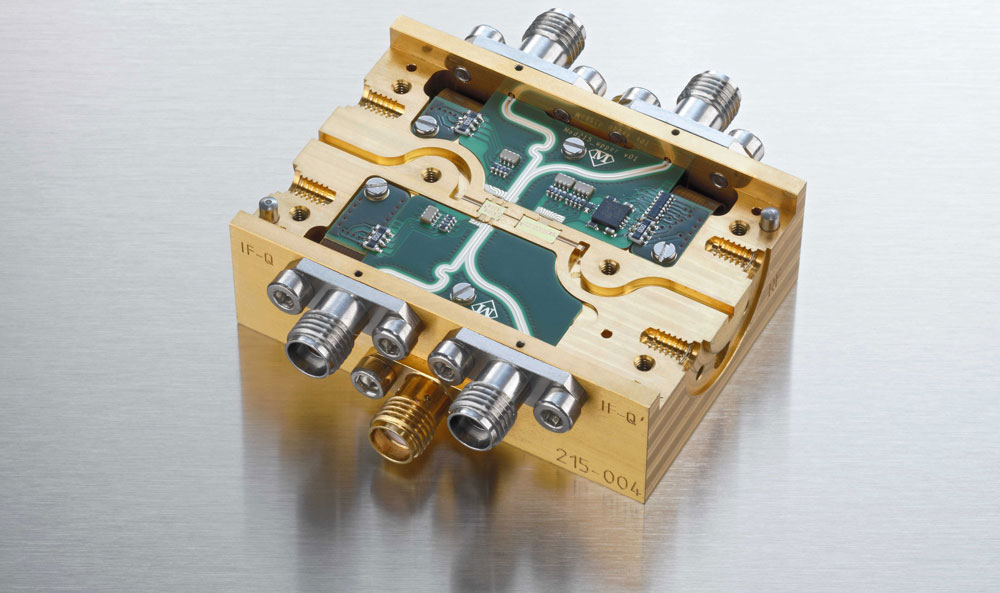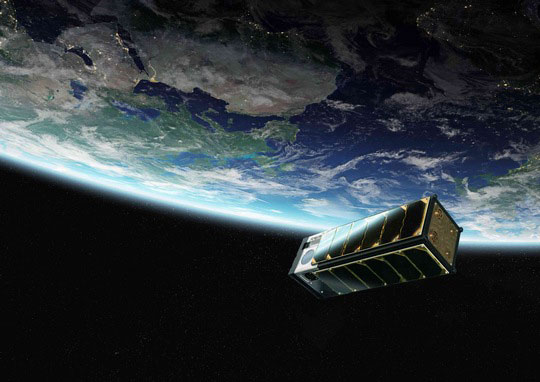News: Microelectronics
13 December 2022
Fraunhofer IAF launches BEACON project as part of ESA’s ARTES program
Due to limited bandwidth, it is becoming increasingly difficult to meet the growing need for higher data rates in satellite systems with very high data throughput. Using higher frequencies can help to meet this increasing demand.
The W-band (75–110GHz) is well suited for satellite communication applications: Not only does it offer high data throughput when used at high altitudes and in space but it is also likely to significantly increase system capacity, reduce the number of gateway earth stations, and thus reduce overall system costs. However, there has been a lack of suitable technology and hardware for applications in the W-band frequency range to date.
The Fraunhofer Institute for Applied Solid State Physics IAF, together with RPG Radiometer Physics GmbH, has hence launched the project ‘BEACON — W-band Integrated Active Receive Front-End’, realized as part of the European Space Agency (ESA) ARTES (Advanced Research in Telecommunications Systems) Advanced Technology Program. The project partners are developing an integrated active W-band receive front-end module with an operating frequency of 81-86GHz that is lower in noise than any previous W-band amplifier module, enabling extremely high data rates or long-distance data transmission through space with low power consumption.
Minimal noise at high data throughput
The receive module is based on Fraunhofer IAF’s extremely low-noise monolithic microwave integrated circuit (MMIC) technology. “Fraunhofer IAF has done tremendous development work in the mHEMT [metamorphic high-electron-mobility transistor] process over the past years and has acquired a core competence in developing amplifiers with the lowest noise worldwide,” says project coordinator and researcher Dr Philipp Neininger. “Based on this, the project aims to reduce the noise figure to below 3.5dB and thus significantly improve the state of the art.”
In addition, the receive module is designed to isolate left-hand from right-hand circular polarization and amplify them with two separate channels (LHCP and RHCP), which serves to effectively double data throughput.

Picture: Similar RF module developed at Fraunhofer IAF. © Fraunhofer IAF
A major challenge in the BEACON project is the novel arrangement of components on the very small module area. The new approach involves integrating a large number of functions within a very small footprint: These include the polarizer, waveguide transitions to two individual amplifiers, two coaxial output connectors and the associated DC circuitry. “The combination of these features — extremely low noise, two different polarizations and an innovative array — brings an enormous technological advance in the field of W-band components,” Neininger says.
W-band data transmission from space already tested

Picture: The W-band receive module is intended to enable low-noise data transmission in satellite communications in the future — such as in the W-Cube nanosatellite pictured. © Fraunhofer IAF
Only last year, satellite signals in the W-band frequency range were received from space for the first time. The W-Cube nanosatellite began its journey to polar orbit aboard a Falcon 9 rocket in summer 2021 and has since been transmitting satellite signals to Earth at 75GHz from an altitude of 500km. For this mission, Fraunhofer IAF had already developed the transmitter module of the satellite as well as the receive module of the corresponding ground station.








